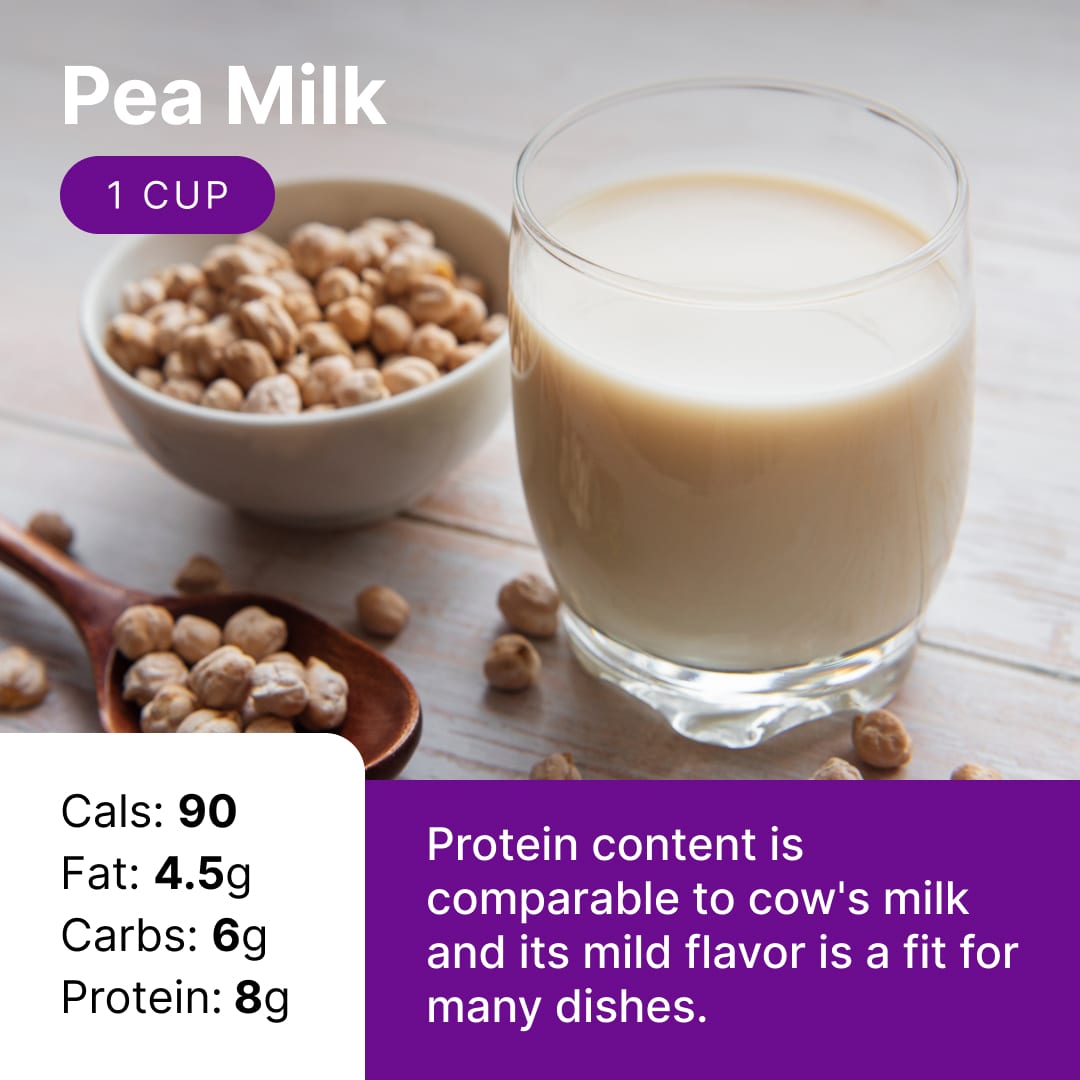The milk aisle definitely isn’t what it used to be, even 10 years ago. With plant-based diets increasing in popularity, more individuals are switching things up from regular cow’s milk to trying milk derived from plants like almonds, coconut, peas, cashews, and oats (to name a few). There seems to be a new kind of plant milk popping up every couple of months, vying for the title “best new alt milk.” But how do these “alt” milks stack up nutrition-wise? Let’s take a look.

Almond milk may be one of the “OG” alt milks, but it has had some strong staying power against some of the newer plant milks. I think this is partly because of its simple, mild flavor that works in anything from a latte to a bowl of cereal, and partly because of its nutrition profile. Depending on the brand and flavor, some almond milk differs slightly in nutrient content. In general, almond milk is relatively low in most nutrients, including protein, fat, carbohydrates and calories. It is not a good source of most vitamins and minerals, but many almond milk brands are fortified with vitamin D, B12 and calcium.

Pea milk is one of the newer alt milks, and it differentiates itself from some of the others because it’s a good source of plant-based protein. At about 8 grams per cup, pea milk is comparable to cow’s milk and soy milk in the protein department, and may be a good option if that macro is important to you. Protein helps promote satiety and satisfaction after meals, and this makes pea milk a good option for things like smoothies and protein shakes. It has a mild flavor so is fairly versatile and can even be used in baking. Like almond milk, fortified versions of pea milk contain vitamin D, calcium, B12 and potassium.

Maybe the newest alt milk, oat milk is, you guessed it, made from oats. Since oats themselves are packed with nutrition, especially heart-healthy soluble fiber, one would hope at least some of that transfers over to oat milk. And it does, to a point. One cup of oat milk contains about 1 gram of soluble fiber, and more protein compared to almond milk (about 3 grams per cup). Since it’s made from a carbohydrate (oats), oat milk contains more carbs compared to some other alt milks, with about 16 grams per cup. The nutrient density here helps make oat milk a hearty, filling choice. It’s great on the side of fruit or a piece of toast for a snack, or in your favorite espresso beverage.

Coconut milk (not the stuff in the can, but the kind you buy in the alt milk aisle), can add delicious flavor to coffee beverages, yogurts or on its own with a cookie. It does differ the most nutritionally from the other examples listed above, however. Coconut milk is the only alt milk here with fat primarily made up of saturated fat, which is usually found in animal products but is also the primary fat in coconuts. Saturated fat can contribute to elevated LDL cholesterol levels, and I do recommend limiting it or replacing it with heart-healthy monounsaturated fats when possible. Coconut milk also contains no protein, so that’s something to keep in mind if you want your alt milk to be a protein source. Coconut milk is fairly low in vitamins and minerals, but many brands are fortified with vitamin D, calcium, vitamin A and B12.
THE BOTTOM LINE
Alt milk is a great place to explore if you’re trying to include more plant-based foods in your diet. While they differ in some ways nutritionally, no one is “better” than the other. Choose your alt milk for flavor, consistency and honestly, whichever one you like the best. Just make sure to read the nutrition label to be in the know about whether or not your milk is fortified with important vitamins like D, calcium and B12.
Ready to take the next step? Unlock MyFitnessPal Premium to access custom goal settings, quick-log recipes, and guided plans from a registered dietitian. Premium users are 65% more likely to reach their weight loss goals!




